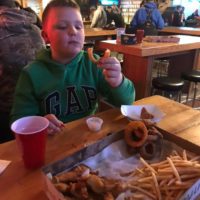In regards to allowing winter harvest, here are a couple of questions I had asked of the DNR this last December and the response back. As I am not much of a winter angler, I was looking for some reasoning for allowing harvest all winter which does help to force summer shutdown. The winter folks not only get to keep fish the entire winter season but also have no worries on a shut down while the mainly summer folks have to deal with the harvest from the winter and a shutdown. Sure would be nice to be able to fish the fall.
My questions:
Over the last couple of years with walleyes being able to be harvested during the winter but not during the summer, I have been trying to figure out why this might be the case. Especially when the # of hours fished in the winter is so much higher than in the summer. Folks are catching a quite a few in the slot this winter which will affect this summers quota.
Can you explain the reasoning and also the science behind allowing walleyes to be kept during the winter or is this purely an economic play for the local businesses?
DNR Response:
“You’re correct that winter angler pressure on Mille Lacs is typically higher in the winter, although there have been several years where we have estimated higher angler pressure in the summer. The reason that some conservative harvest has been allowed in winter and not in summer the last several years, relates to the recent lower safe allocations and the higher walleye catch rates that tend to occur in the summer fishery. In essence, the walleye catch rates in summer are so much higher than in winter that if open-water harvest was allowed we often would expect to reach the State’s safe allocation within the first couple of open water creel periods. When we solicited input for how to structure the open water regulation, we did offer that it was perfectly fine to consider a regulation that would harvest up to the safe allocation and then shut down walleye fishing for the rest of the open water period once allocation had been reached; however, the input we received was that the majority of input members wished to have a fishing season that ran through as much of the open water season as possible. So, with the higher walleye catch rates that anglers experience in the open-water portion of the fishing season there are actually many more walleye caught in the summer despite typically experiencing less effort. Further, hooking mortality tends to be a temperature related event, with higher mortality occurring with increased temperatures. With higher angler catch rates and higher walleye hooking mortality occurring with walleye catches in the summer, anglers actually still tend to kill more walleye in the summer through hooking mortality than what would be killed in winter with hooking mortality and harvest combined.”

